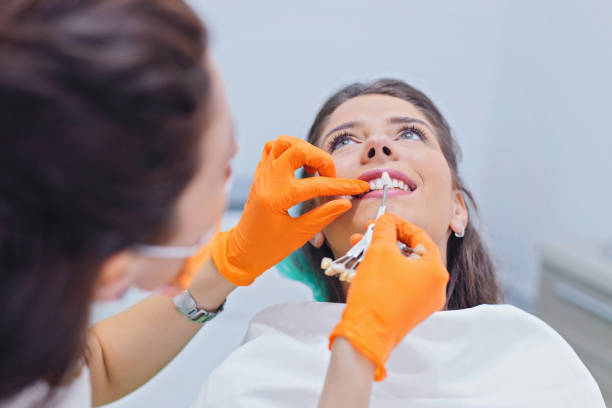How much is a crown without insurance? The importance of dental health cannot be overstated, and sometimes, dental procedures become essential to maintaining a healthy smile.
Dental crowns, for instance, are common restorative solutions used to repair damaged or decayed teeth, restoring both functionality and aesthetics.
However, one significant concern for individuals without insurance coverage is the potential cost of such procedures.
“How much is a crown without insurance?” becomes a pertinent question for those who seek dental care outside the scope of insurance benefits.
In this article, we will delve into the factors influencing the cost of dental crowns.
Understanding the financial aspects of dental crown procedures is essential for making informed decisions about oral health and well-being.
Also Read:
Does Insurance Cover Tummy Tuck?
How Much Is a Crown without Insurance?
The cost of a dental crown without insurance can vary based on several factors, including the materials used, the complexity of the procedure, and the geographical location of the dental practice.
On average, a dental crown can range from $800 to $1,500 or more per tooth when paying out of pocket.
However, this estimate might not include additional expenses such as consultations, X-rays, or potential adjustments.
Without insurance coverage, individuals might face a higher financial burden when opting for a dental crown procedure.
Dental insurance often helps mitigate costs by covering a portion of the expenses.
Without this coverage, patients could find themselves needing to cover the full expense independently.
To manage these costs, some dental practices offer payment plans or financing options, allowing patients to spread out the expense over time.
It’s also worth considering that seeking dental care early on can prevent more extensive and costly procedures down the line.
Regular dental check-ups and addressing dental issues promptly could potentially save individuals from needing a crown altogether.
Therefore, while the cost of a crown without insurance might seem daunting, it’s crucial to view it as an investment in oral health and overall well-being.
Factors Influencing Crown Expenses
The cost of dental crowns can be influenced by several key factors that impact the overall expenses of the procedure.
Firstly, the type of material chosen for the crown significantly affects the cost.
Options range from more affordable materials like metal alloys to pricier ones like porcelain or zirconia, each with varying degrees of durability and aesthetics.
The location of the dental practice also plays a role, as prices tend to be higher in urban or affluent areas compared to rural regions.
The complexity of the tooth’s condition is another determinant; severely damaged teeth might require additional preparatory work, affecting both time and cost.
Moreover, the expertise of the dentist and the technology used in the procedure can influence pricing.
Diagnostic procedures such as X-rays, scans, and consultations contribute to the overall expense.
Post-procedural costs, such as potential adjustments or follow-up appointments, should also be considered.
Without insurance coverage, these factors collectively contribute to the out-of-pocket expenses for a dental crown.
To make an informed decision, patients should consult with their dentist to understand how these factors uniquely apply to their situation, enabling them to choose the best option that balances cost, quality, and oral health.
Seeking Affordable Alternatives for Dental Crowns
For individuals without insurance, seeking affordable alternatives for dental crowns can be a prudent approach to managing oral health expenses.
One option is to explore dental schools or clinics associated with educational institutions.
These settings often provide dental services at reduced rates, as they offer training opportunities for aspiring dentists under professional supervision.
Researching different dental practices and comparing quotes can also help find competitive pricing.
Some dentists may offer discounts for paying upfront or provide payment plans to distribute the cost over time.
Exploring nearby cities or towns for treatment can yield cost differences, as dental care expenses can vary based on location.
Considering alternative materials can also be cost-effective.
While porcelain crowns are popular for their natural appearance, resin or metal crowns can be more affordable without compromising functionality.
Dental insurance plans might not cover cosmetic enhancements like all-porcelain crowns, so opting for materials with practical benefits can save money.
In some cases, a dental bridge or partial denture might be a viable alternative to a crown, especially if multiple adjacent teeth are in need of restoration.
However, the suitability of alternatives depends on individual dental health circumstances, making professional consultation crucial.
Overall, exploring various avenues, comparing options, and consulting with dental professionals can help individuals find affordable alternatives for dental crowns, ensuring essential oral health without straining their financial resources.
Also Read:
Is Mortgage Insurance the Same as Homeowners Insurance?
What Happens to Your Mortgage When You File Bankruptcy?
Conclusion
Inquiring about the cost of a dental crown without insurance highlights the significance of financial considerations in oral healthcare decisions.
While the expenses can vary due to materials, location, and procedural factors, seeking cost-effective solutions is essential.
Exploring alternatives, negotiating payment plans, and maintaining regular dental check-ups can aid in managing costs and preventing more extensive issues.
Prioritizing oral health, informed by an understanding of potential expenses, empowers individuals to make responsible choices for their well-being, aligning dental care with both health and financial goals.










